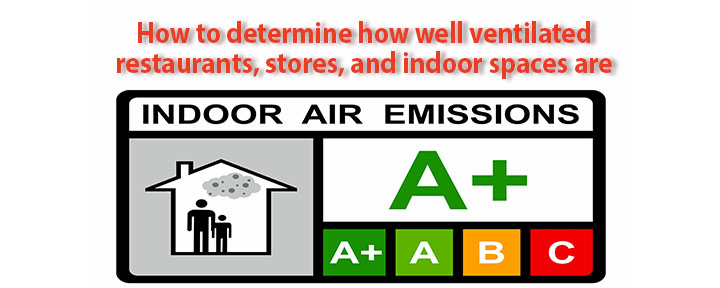How CO2 monitors can alert you to unsafe indoor ventilation

It seems that the best way to prevent getting COVID-19 or airborne viruses is to reduce the chance of breathing in the virus. So, wearing good quality masks and facial shields, a washing hands with sudsy soap are the first line of defense. Then, staying far away from people. And, filtering the air in your home or office with a HEPA filter. But, what about the air quality in your local grocery store, doctor’s offices, and other places you frequent?
Infectious disease experts at UCSF recommend using a CO2 monitor to determine the amount of air that is re-breathed in stores, restaurants, and offices. While we aren’t really concerned about the actual CO2 in the room, the monitor calculates the exchange of fresh air indoors.
I just purchased a CO2 monitor for under $50 and tested several places that I visit. First, I checked my house and was happy to see that it was fine at about 500 ppm. But my car was up to 1400 ppm. I checked the lab where I got some blood work done and was shocked that it was over 3000 ppm! I asked the receptionist when they would see me and told her that I’ll return at that time. Meanwhile, I quickly walked out and waited outside where the air was a healthy 450 ppm.
Seems to me that using CO2 monitors can help us make smart choices about where we go and how long we can stay. Restaurants, movie theaters, and schools would be wise to post their CO2 numbers to encourage rational re-opening of services.
For me, I’m planning on wearing my mask and face shield when interfacing with others in close quarters when I need to. I carry my CO2 monitor in my purse and use it every time I walk into an indoor space to make sure the numbers are in the 400-500 ppm range.
